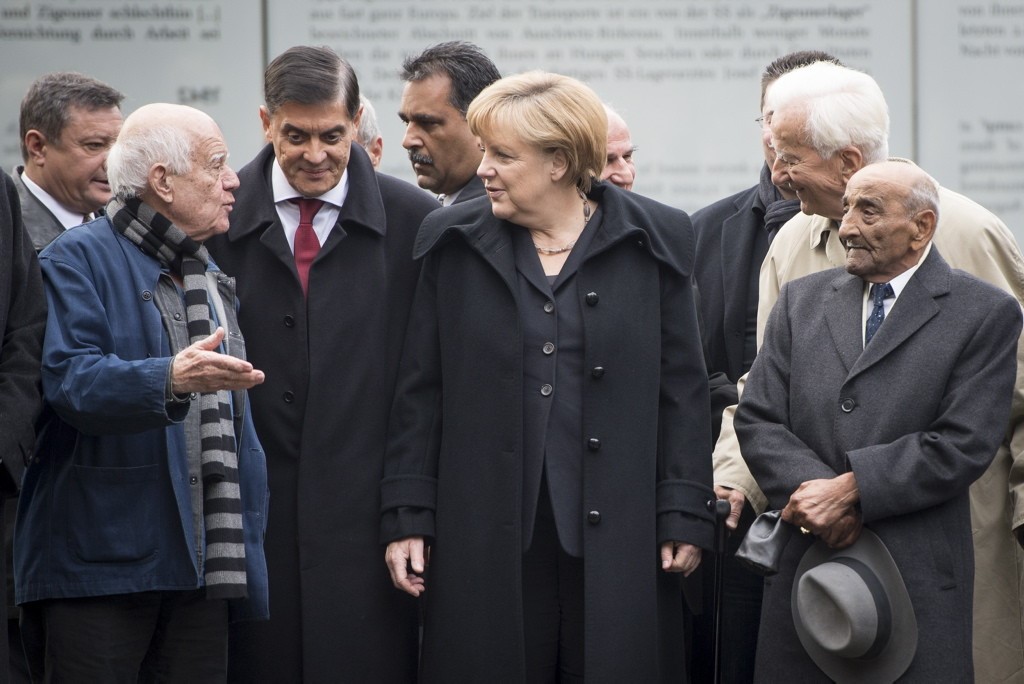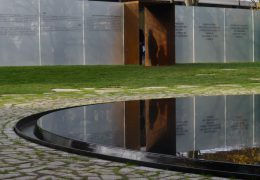
Dear Sinti and Roma, dear friends and supporters
I would like to inform you all today about the current status of the planning for the construction of the S21 suburban railway line in Berlin, and how far our memorial will be affected. I know that there is a lot of false information and untruths on the internet, and I therefore want to present the detailed planning at Deutsche Bahn here now.
As you know, the Central Council of German Sinti and Roma only learned about the plans of Deutsche Bahn in March 2020.
I then reached an early understanding with Dani Karavan, the artist who designed the monument for us, and both of our positions were clear: namely, that the protection and preservation of the Memorial to the Sinti and Roma of Europe murdered under National Socialism is our top priority.
After an extensive conversation in July of last year, we jointly declared: “We have brought together here our bond from our common history, our common fate of Jews, Sinti and Roma, as artists on the one hand, and as civil rights activists and politicians on the other.”
In other words, the monument, for which I have campaigned and fought for almost 20 years, has the highest moral and political value for all of us.
At the same time, however, and I have also emphasised this from the beginning, we must acknowledge the Berlin Senate’s decision to expand public transport in Berlin. With the version 12h for the new S-Bahn line, the railway has provided a very good basis for an agreement after many discussions with the Central Council of German Sinti and Roma.
The Central Council knows the necessity of building the new S-Bahn line S21; this line is necessary for Berlin and for the people in Berlin. The German Sinti and Roma are a part of this society and therefore a safe route must be found here together with the railway, the Berlin Senate and the German Bundestag.
I would like to make one thing clear once again at this point: this is the memorial of the Federal Republic of Germany, this is where state and society remember the crimes of the National Socialists, and this is where we commemorate the 500,000 Sinti and Roma who were murdered during the Nazi Holocaust.
For us, this memorial is not a place that could replace the graves for the many thousands of people who have no graves, who were shot in the extermination camps or behind the Eastern Front by the Einsatzgruppen. This memorial is located directly next to the German Parliament and it expresses here at this point the responsibility of state and society towards our minority, but also our common responsibility for our constitutional state today and in the future.
I would therefore like to expressly thank the many people and institutions who have publicly and vis-à-vis politicians and the railways campaigned for the protection of the monument. This shows us that the memorial and the Holocaust of the 500,000 Sinti and Roma in Europe are perceived as an important part of our common German history.

We are an integral part of our society. We must therefore take on responsibility in our country as well. Berlin needs the new S-Bahn and I am very pleased that Deutsche Bahn, with the variant 12h now presented and a detailed plan for the protection of the monument, is presenting a perspective that equally combines maximum protection of the monument with a feasible route.
Whereas at the beginning of the extensive discussions, which were initially held without the Central Council but only with the Foundation for the Monument, an open excavation through the grounds of the monument was still planned, the status now, about which the representative of Deutsche Bahn, Mr Kaczmarek, informed me on 27 April, is that the monument grounds will be tunneled under. This means that access to the memorial and a dignified commemoration there will in any case be possible at all times. The railway has also stated that the function of the memorial, i.e. the supply of electricity and water, will be guaranteed without interruption and without restriction.
For the current supply tunnel, which leads to the technical room under the Black Basin, and which crosses the planned tunnel of the S21, a new access to the existing supply tunnel is to be built first, in order to be able to demolish part of the old tunnel afterwards, according to the plans of Deutsche Bahn. According to the company, this will guarantee the technical supply of the water basin without interruption.
In the same way, the trees at the monument site will be preserved as far as possible; only where the new access to the supply tunnel is being built, some trees will have to be felled as construction continues towards the Brandenburg Gate. To this end, the Berlin Senate will negotiate directly with Dani Karavan to ensure the greatest possible protection for the entire site. After the completion of the S-Bahn construction, the area will have to be redesigned, i.e. replanted with trees.
I know that there are those who believe that nothing should be done to the monument and the grounds, and who therefore persist in their total rejection of the construction of the S-Bahn. But it must be clear to all of us that public transport in Berlin urgently needs to be expanded – and that we would be held against ourselves if we, as Sinti and Roma, wanted to stand here against the interests of the entire Berlin population. Such an attitude, as is still taken by individual persons and associations, is irresponsible and harms us Sinti and Roma in any case.
There are two conflicting interests in this place, and we, as a minority, must make our contribution to a reasonable understanding. On the one hand, there is the clear commitment of the Central Council of German Sinti and Roma to ensure that our memorial receives the maximum protection and that commemoration at this site is always guaranteed for us. On the other hand, there is the urgent need for the expansion of public transport for the people of Berlin, which the Berlin Senate and Deutsche Bahn must represent.
I have spoken to many elderly people, some of whom survived the Holocaust and for whom our memorial is recognition of their suffering, and the suffering of all our relatives.
These elderly people told me that they had suffered so much, that these few months of a building site were nothing for them to argue about. But it is important for them that the memorial remains at the existing site, and that it forever reminds them of the fate of our people. I am committed to this and the Central Council of German Sinti and Roma is committed to this as well.
The statement as video (german only)

